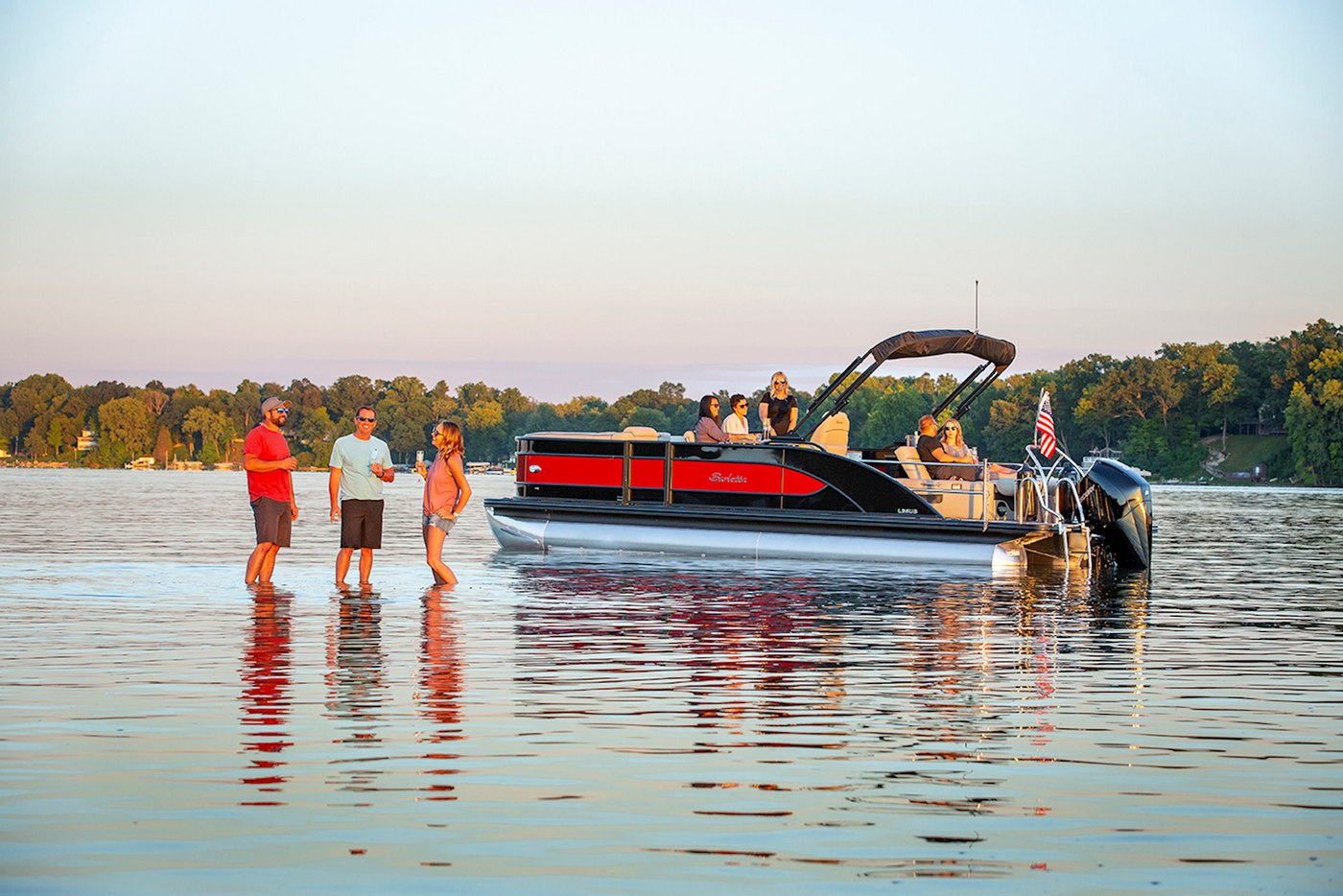Which Anchor is Right for My Boat? (How to Choose)
As a long-time boater, there’s a lot of gear that I bring aboard my pontoon boat. From coolers to paper towels, I usually keep a small stockpile of necessities stored away all summer long for easy access.
The more I hit the water, the more I learned about what’s valuable to keep with you at all times and what can leave the boat after each use. Things like extra flip flops for last-minute pit stops and sunglasses in case a friend forgot theirs became a norm.
If you’re new to boating, I recommend making a long list of boat accessories before you jump on board. Doing this can save a lot of hassle when you’re in the middle of the lake and you run out of sunscreen or need an extra anchor on a windy day.
Speaking of anchors, that is one item that never leaves my boat, even through winter storage. I live on a sandy bottom lake and we throw anchor nearly every time we venture out for the day. This is one of the most important pieces of boat gear you can have, but do you know which type is right for you?
I’m going to explain some of the more popular anchor types and how to choose the best one for your situation. You might be surprised that there’s more to consider in an anchor other than weight.
Popular Anchor Types
There are a ton of different anchor types to choose from and everyone’s situation will be different. There’s no hard rule that one type of anchor is good for everyone. I’m going to list some of the most popular choices for recreational boating in hopes that it will help you make an educated decision on which to buy.
Danforth Anchor 
The Danforth anchor is designed to dig into hard sand and soft bottoms. This is a very popular anchor choice and is great for most seabeds. However, they are not conducive to rocky river beds as they are not able to dig in and hold.
This type of anchor is also popular among recreational boaters because the flukes fold in which makes it easier to store. I have personally used this type of anchor my entire life as I boat on a soft bottom lake and this anchor digs in nicely with its sharp flukes.
Plow Anchor 
The plow anchor is a close relative to the Danforth because it has a similar shape. It is also useful in most bottoms such as sand, muck, and clay. Just as the Danforth, it struggles in rocky, hard bottoms.
Depending on the style of plow anchor you find, some of them do not hinge and fold up which makes them bulkier and in turn, not as easy to store.
Mushroom Anchor 
The mushroom anchor gets its name from its obvious mushroom shape. It’s great for small boats or permanently set buoys. That’s because, the longer the mushroom sits, the top collects silt and becomes heavier over time.
This is a great choice for small fishing boats that make short stops and anchors for a small amount of time. Used best in soft, muddy bottoms.
Grapnel Anchor 
The grapnel anchor is great for rocky bottoms because its shape allows the flukes to hook onto inanimate objects and hold strong. Mostly used for smaller boats and short anchoring periods.
Another aspect that makes it great for smaller vessels is the fact that it folds up and fits into compact storage compartments.
Richter Anchor 
The Richter anchor is a multipurpose anchor that holds well in most bottoms. Like the grapnel anchor, the flukes hold well in rocky bottoms and weeds. The shape is not conducive to sand as the angle of the flukes can’t dig in like the Danforth.
However, because of its design and how it displaces weight, it can hold in most bottoms as long as there isn’t a strong current or wind pushing the boat. A downside to this design is that it is very bulky and it does not fold up, so you do have to have large storage space for it.
Auger Anchors 
This type of anchor is great for sandy bottoms such as the beach or sandbars. I keep two of these on my boat at all times because we frequent the sandbar and stay for long periods. The auger twists down into the sand and holds as a screw holds into a wall.
We use manual auger anchors however there is a product on the market called Power-Pole. This is essentially an electric auger anchor used in shallow, soft bottoms.
What is an Anchor Rode?
An anchor rode is the line that connects the anchor to your boat. This line is usually made up of rope or chain, and sometimes a combination of the two. There are a few things to consider when choosing your anchor rode.
One of the biggest mistakes is not having enough anchor rode for your setup. A critical step to setting an anchor is knowing how far out the anchor should be in relation to the boat. Every situation will be different because every body of water has different depths.
A good place to start in determining how much anchor rode you need is by calculating one foot of rode for each foot of boat. As I mentioned, this is a starting point. If you plan on anchoring in 80’ of water, you will need more line than that.
As I mentioned, one type of anchor rode is made up of rope and chain combined. I recommend this type over just using rope or just using chain. The metal chain will be connected to the bottom of the rope closest to the anchor.
This chain acts as a weight underwater and holds down the front side of the anchor keeping it from bobbing up when waves hit the line. The rope also pulls the chain which then allows the anchor to dig into the floor and set.
A properly set anchor has plenty of anchor rode and the anchor itself is far out from the boat. For example, in 10’ of water with a sandy bottom, you may need 60-80’ of line so that the anchor is far out and setting itself without interference from the boat bobbing up and down in the waves.
Learn how to choose anchor rode and what is best for your type of anchoring situation. Getting this right will ensure that you get the most out of the anchor you choose.
How to Anchor a Boat
Ryan with Barletta shows us how to anchor a pontoon boat step by step
How to Choose an Anchor
There are three main factors to take into account when choosing an anchor.
- Seabed
- Water conditions
- Size of your boat
It’s critical to know what the seabed is like in your body of water before choosing an anchor. That’s because different shaped anchors will perform better in certain types of ground. Just because an anchor is extremely heavy doesn’t necessarily mean it’s going to hook into the seabed.
Knowing what the floor of the water you’re on is made of will determine the style anchor you should purchase. Are you anchoring in sand, muck, weeds, clay, silt, or rocks? All of these options will have an anchor that works best.
The water conditions will also play a part in this. A rocky river bed with currents is going to call for a different anchor than a sandy calm lake. Take things such as current, wind speeds, and large chop into consideration when choosing an anchor and anchor rode.
The length of your boat will be a guide when choosing the weight of the anchor you need. An old rule of thumb for choosing the weight of anchor your boat requires is to calculate one pound for every foot of boat.
That’s not totally accurate because the anchors of today have evolved to be more efficient in how they’re shaped. For instance, a 22’ aluminum Jon boat may need a much smaller anchor than a 22’ fiberglass cruiser depending on the seabed and water conditions.
I use three different style anchors because I boat on a large soft bottom lake with lots of chop. So, for my 28’ pontoon boat, I don’t use a 28-pound anchor. If I'm at the sandbar, I use two auger-style anchors. If it’s a windy day, I’ll also toss out a 20 pound Danforth anchor.
If it’s a calm day and the sandbar is empty, I may just throw the Danforth anchor and allow my boat to swing around it once it’s set in the sand. Every situation is different and I believe it’s better to be over-prepared when it comes to anchoring.
The third type I keep on board is the Richter anchor. I use this once a year when we park the boat in the middle of the lake to watch fireworks on the fourth of July. The middle of our lake is mostly muck and weeds on the bottom, so this style comes in handy.
Time to Drop Anchor
As I’ve mentioned, every situation will be different when it comes to figuring the weight of the anchor you need, but if you make sure you’re finding the right type of anchor to meet the needs of your seabed, you should be fine.
Heavier is always better and keeping a spare can come in handy for windy days. Practice will make perfect when it comes to choosing the right anchor, anchor rode and learning how to properly secure the anchor.
If you’re looking to purchase an anchor and want more information, I recommend talking with your dealer. They will be knowledgeable on the subject and most carry a plethora of choices in stock.



